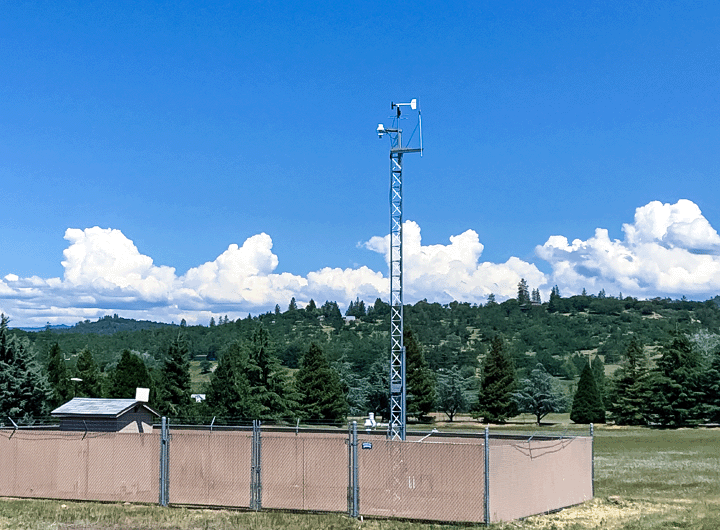In the News
1200-Z Stormwater Discharge Permit Reissued by Oregon DEQ

In August, the Oregon Department of Environmental Quality (DEQ) entered into a Settlement Agreement with environmental advocacy groups (Columbia Riverkeeper and Northwest Environmental Defense Center) and a group of industrial stormwater permittees (Oregon Industrial Stormwater Group) that outlined changes to the 1200-Z Stormwater Discharge Permit, which was reissued on October 22, 2018.
MFA’s team of stormwater consultants has summarized the 1200-Z Permit changes to help you comply! See below for the most up-to-date information on the 1200-Z Stormwater Discharge Permit updates and get in touch if you have questions.
Regional Benchmark for Zinc
The regional benchmark for total zinc was raised back to 0.12 milligrams/liter (mg/L) (from 0.090 mg/L). The 0.12 mg/L benchmark will now apply to all of Oregon, except for the Columbia Slough Watershed where the zinc benchmark is higher (0.24 mg/L).
Frequency of Impairment Pollutant Monitoring
The frequency of impairment pollutant monitoring was increased from two to four times per year. Impairment pollutant sampling will now be conducted at the same frequency as benchmark sampling. Many facilities (e.g., those in the Portland Harbor, Lower Willamette, parts of the Columbia River) have a long list of impairment pollutants, and this change could significantly increase their sampling costs if they do not obtain a monitoring waiver.
Tier I Reports
Tier I Reports prepared in response to an exceedance of an impairment pollutant reference concentration now have to be submitted to the DEQ or agent no later than 60 days after receiving monitoring results.
Since the reference concentrations for impairment pollutants are typically equal to surface water quality standards (while benchmarks are typically higher), many facilities struggle to meet these standards. For example, many Oregon industries struggle to consistently meet the total iron reference concentration. If you are one of those facilities, make sure that you remember to select and implement a corrective action, document it in a Tier I Report, and submit it within 60 days of the issuance of the lab report. The Tier I corrective action should still be implemented within 30 days of receiving the lab report.
Tier I Reports prepared in response to benchmark exceedances will continue to be filed on site.
Discharge Monitoring Reports
The past versions of the 1200-Z Permit required annual submittal of a Discharge Monitoring Report (DMR). The re-issued 1200-Z Permit increased the reporting frequency to quarterly with the following deadlines:
DMR Submission Deadlines
- November 15*
- February 15*
- May 15
- August 15
*The first reporting quarter of the 2018-2019 Permit year will be reported together with the second quarter (samples collected between July 1 and December 31, 2018) and will be due on February 15, 2019. Don’t forget that DMR submittal is required even if you have been granted monitoring waivers for all discharge points and parameters.
The fourth quarter DMR (due August 15) submitted during the second year of the 1200-Z Permit (for most permittees, the second year is the 2018-2019 Permit year) will need to report the geometric mean of the samples collected between July 2018 and June 2019. The geometric mean will determine whether a Tier II corrective action (treatment) is required. Don’t forget that the 1200-Z Permit allows you to collect more than the minimum four samples, as long as they are at least 14 days apart.
Contact us if you would like to discuss your sampling results and potential pollution-reduction measures that may help you avoid triggering a Tier II corrective action.
As a reminder, DMRs must include the following:
- Monitoring results entered into the DEQ’s DMR Form (new DMR forms have not been published by the DEQ yet) certified by the “responsible corporate officer”
- Lab reports that include method detection limit, the analytical method, and the lab’s quality assurance/quality control records
- pH field notes (calibration records, date/time of sample collection and measurement, and measured pH values)
Monitoring Variances
If a portion or all of the stormwater generated at your site infiltrates or is re-used on site, and you are unable to collect a minimum of four samples due to “no discharge” conditions, you will need to request a Monitoring Variance. Variance requests will have to be submitted semi-annually, along with the second and fourth quarter DMRs (due February 15 and November 15).
Per the DEQ’s Monitoring Variance Request Fact Sheet, the request for a variance must include:
- A hydrologic analysis conducted following good engineering practices
- Rainfall records from nearby published rain gauges or an on-site rain gauge
- “No discharge” records (inspection records and/or photos, flow sensor/meter data)
Representative Sampling
If run-on from neighboring properties or non-industrial areas of the site comingles with industrial stormwater at your facility, the comingled flow is regulated under the Permit. Samples representative of industrial activities must be collected (to the extent practicable) at/near the property line, before on-site flows combine with off-site stormwater, receiving waters or discharges permitted under separate permits (e.g., cooling water, wastewater). This may impact many facilities located in ports or industrial parks where a single storm sewer system drains multiple facilities.
New Dischargers to Impaired Waterbodies
The re-issued 1200-Z Permit also tightens the requirements for new facilities that propose to discharge to impaired water bodies (e.g., Lower Willamette River and the Portland Harbor, Columbia Slough, parts of the Columbia River). We did not list the requirements in this blog post as they pertain to facilities not yet covered under the 1200-Z Permit, but we would be happy to discuss these requirements with you.
Questions?
Now that you’re up-to-date on the latest 1200-Z Permit changes, here are some common questions you may want to ensure you have answers for:
- Does my facility qualify for a monitoring waiver?
- How do I request a monitoring variance?
- How do I select a Tier I corrective action and/or prepare a Tier I Report?
- What can I do to try to avoid a Tier II corrective action?
If you’d like to learn more about how the new 1200-Z Permit changes may impact your facility, get in touch with MFA’s stormwater consultant Ada Banasik using the contact form below.



